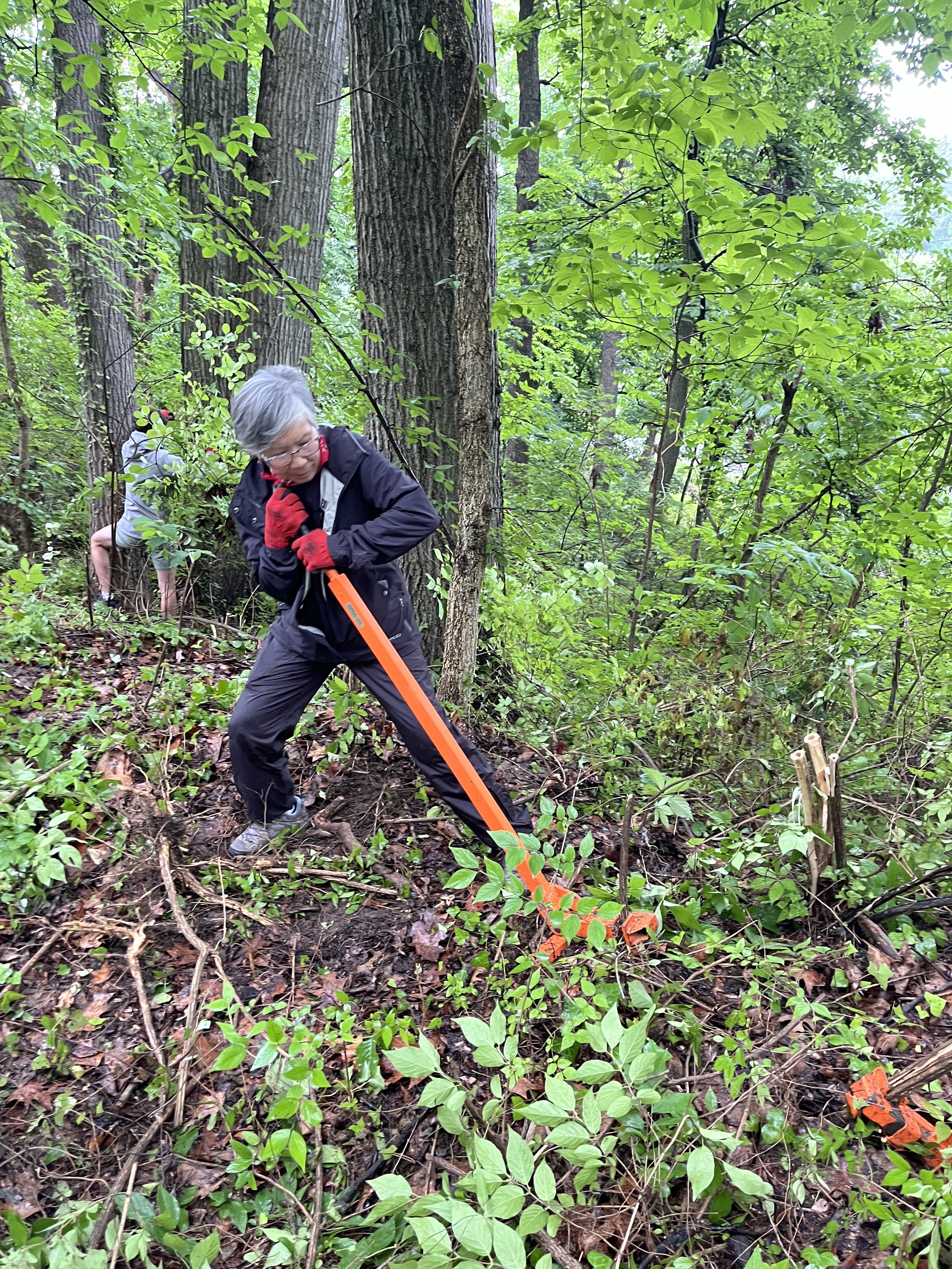LFWA Celebrates 17 years of Stewardship with Gala Event
March 9 was our birthday and we celebrated with music, dinner, birthday cake and special recognition for super volunteers.
Maryland State Delegate Marc Korman joined us as our key note speaker and delivered a talk on recent environmental bills in Annapolis. Korman was also honored with a LFWA Bacteria Monitoring Team t-shirt in recognition of his role in helping to solve the fecal bacteria problem on the Willett Branch.
Five super volunteers were recognized for their many hours of service. These volunteers had the most hours of any volunteers who are not in a leadership position. Julie Steinberg is one of LFWA first volunteers, showing up in our data base in 2009. She has volunteered 99 hours. Colette Cowey is another long time member and volunteer joining LFWA in 2012 or maybe earilier. She has 156 hours hours. Averill Simone was the youngest volunteer to be recognized. She joined LFWA in 2022 and has already volunteered 82 hours at 42 events. Sally Winthrop joined LFWA in 2021 and has volunteered at 60 events for a total of 90 hours. Emily Cordas also has 90 hours participating in 77 events since joining LFWA in 2020.
Super Volunteers 2025 with LFWA Director Sarah Morse: from left: Sally Winthrop, Emily Cordas, Averill Simone, Sarah Morse, Julie Steinberg, Colette Cowey.
LFWA board members, from left: Emily Simone, Sara Robinson, Karen Thornton, Jack Sobel, George Wyeth and Mikel Moore. Not pictured is John Drake.
The evening ended with the election of a new board. We are happy to have Karen Thornton back as President, John Drake is Vice President, George Wyeth continues as Treasurer and Sara Robinson is our long time Secretary. Emily Simone, Jack Sobel, and Mikel Moore comprise the rest of the board. Board member Josie Gabel has retired. We are grateful for her service and leadership.
thank yous
Thank you to Pete Papageorge for the fabulous music and to Westmoreland Church for use of their beautiful space. To Julie and Karen for helping serve the food. To Keith for the delicious bread, to Sarah Morse for the delicious birthday cake and desserts, to everyone who put away tables and chairs at the end, and, of course, to all the volunteers who make LFWA possible. We cannot do it without you.














